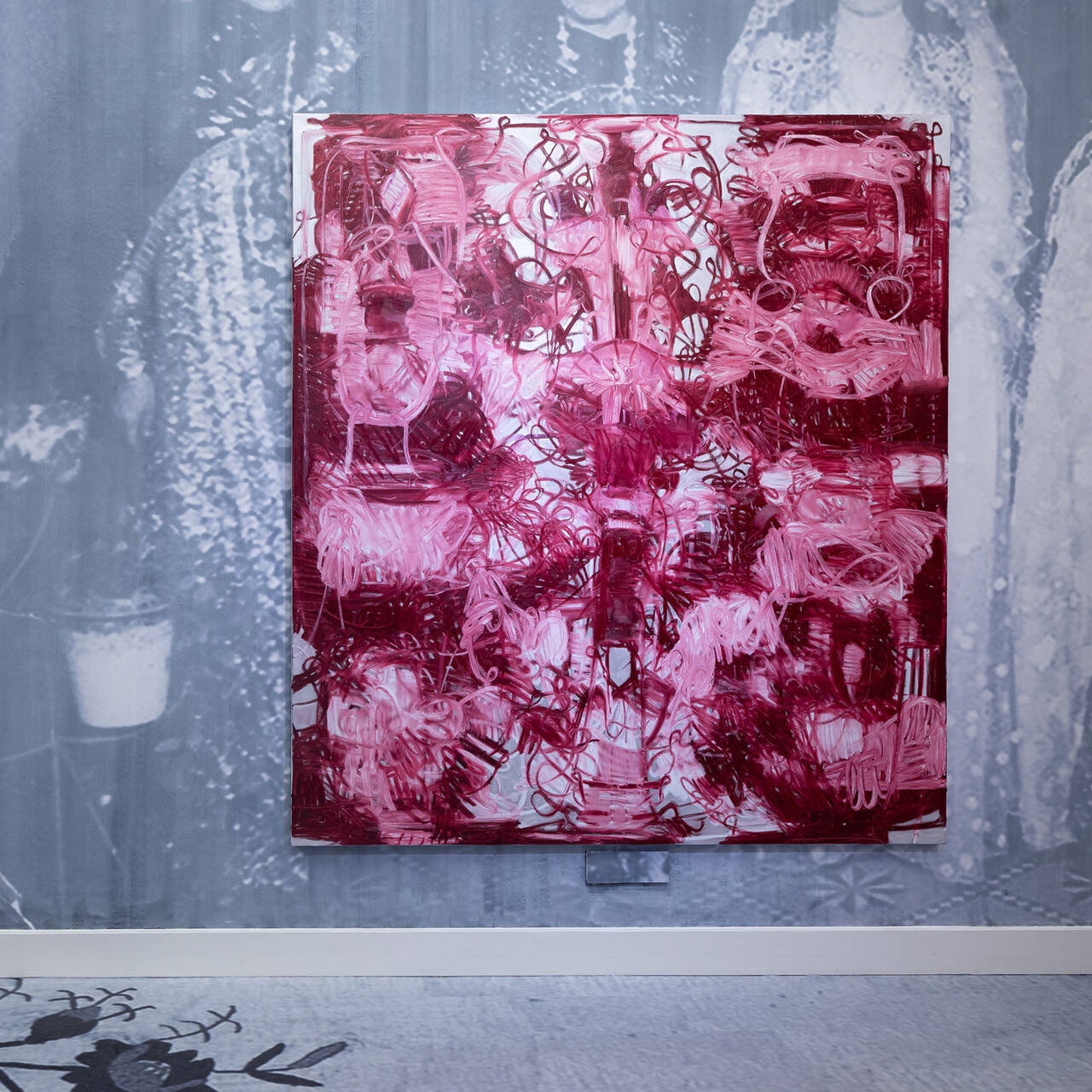Exuberant, funny, eccentric and full of allusions: The Schirn presents the Iranian artist collective's first solo exhibition in Germany.
The large-scale installations of the Iranian artist collective transport viewers into a highly distinctive world and can be seen at the Schirn from September 3 to December 13, 2020. They create surprising encounters, focus attention on the urgent political and social conflicts of the present challenging power mechanisms, normative gender roles, and the art world. For the exhibition, Ramin Haerizadeh, Rokni Haerizadeh, and Hesam Rahmanian developed an environment that they regard as an alternative landscape. It revolves around the Near East, around war, exile, and migration as well as quarantine and dance.
With melancholic poetry and caustic humor, the artists transform bleak scenes into caricature-like grotesques that reflect the abstruse nature of the global world. The presentation unites a dense web of detailed narratives and references. Based on the principle of “work in progress”, the artists bring together new and selected existing works. Starting point and centerpiece is a monumental floor painting created especially for the exhibition. It is supplemented with sculptures, texts, photographs, sound, as well as five videos. On view are also new works dealing with work and live conditions during the Corona-Pandemic.
The trio creates an immersive environment
The basis and center of the trio’s artistic work is their house in Dubai. In the process of living and working together, they create their artworks and exhibitions there—frequently in exchange with friends or other artists. The exhibition presents, for instance two sculptures, which were created in cooperation with the Egyptian artist Hoda Tawakol, or the performative video work “We Are the Eighth of a Kind” (2014), in collaboration with the American artist and musician Lonnie Holley. Corresponding to their definition of the collective, Haerizadeh, Haerizadeh, and Rahmanian each work in their own style both together as well as independently.
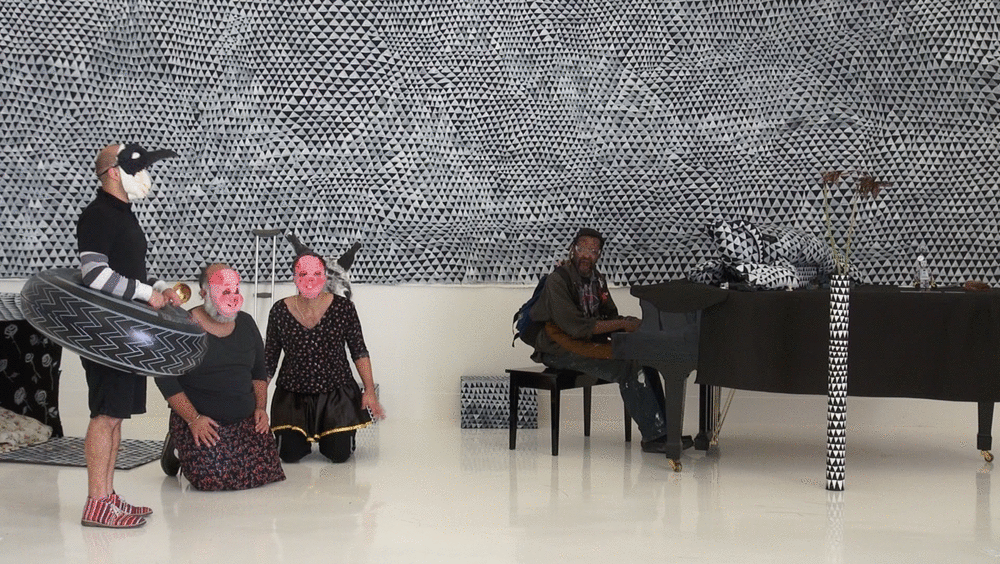
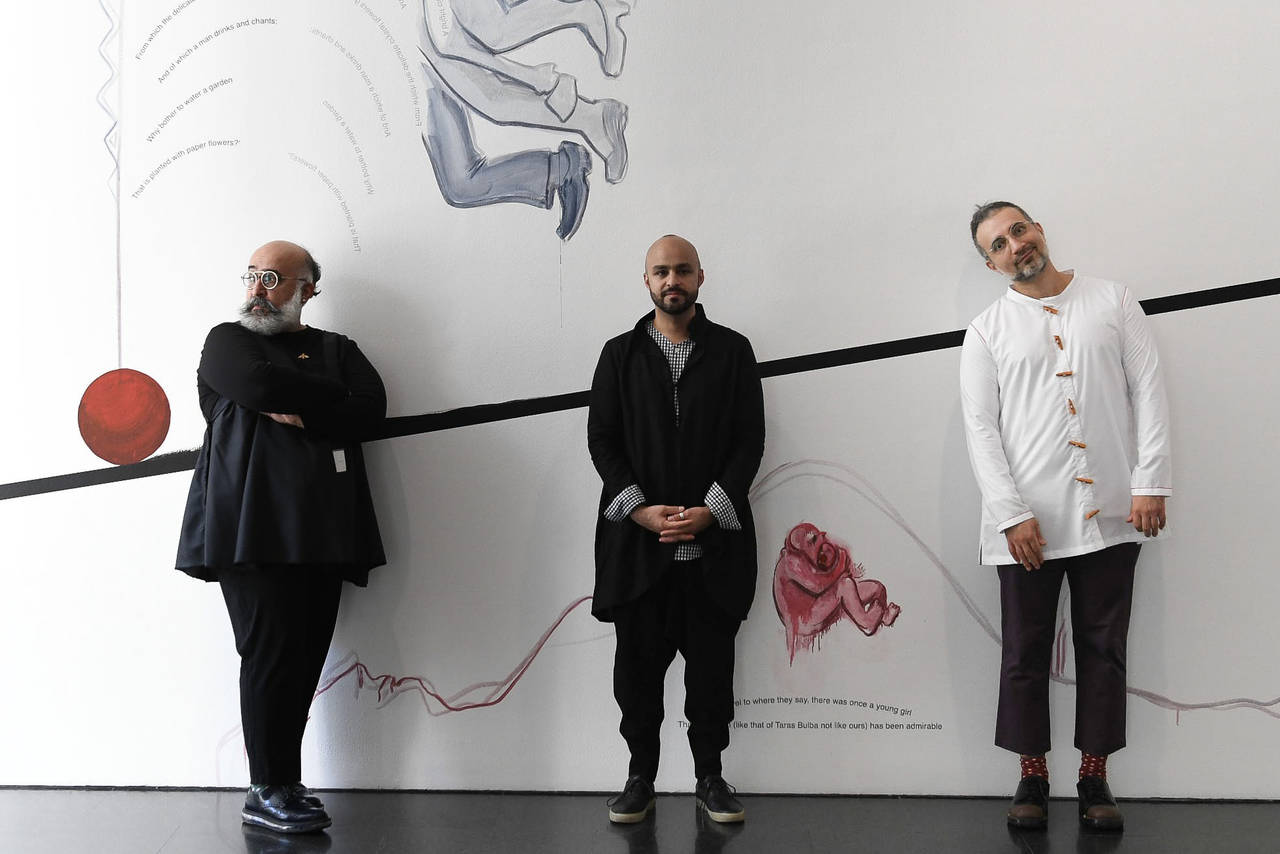
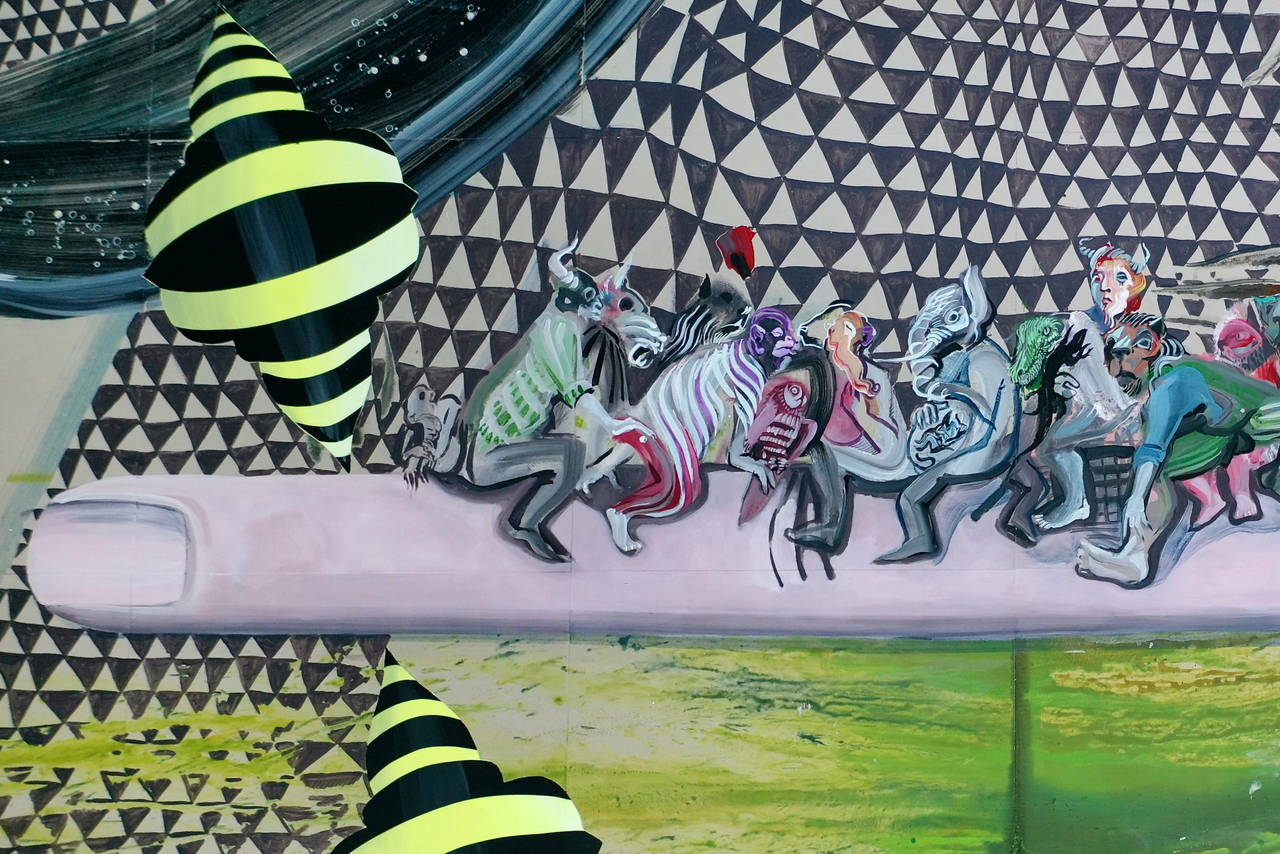
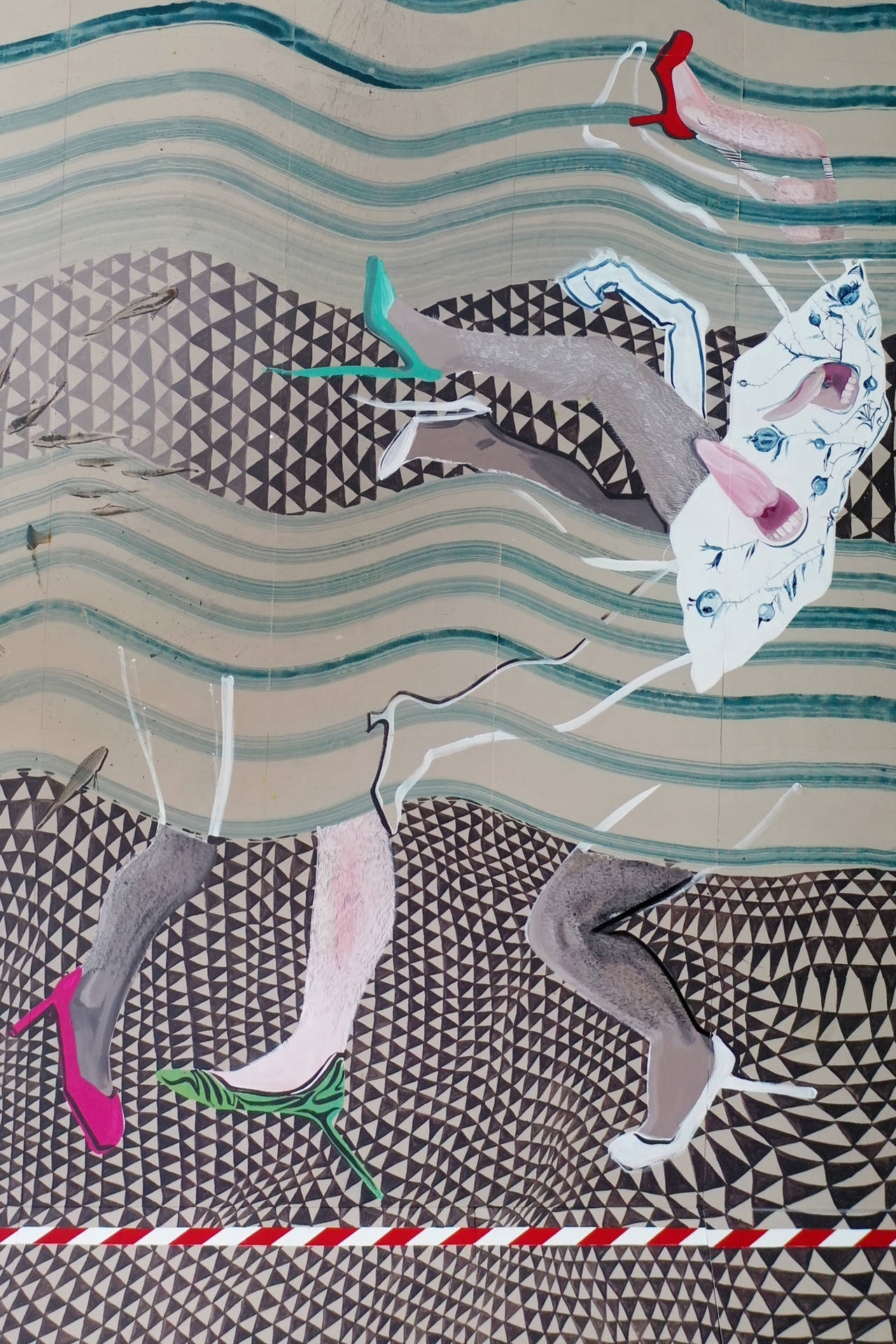
Fundamental element of the Schirn exhibition is the large-format floor painting. The structure is based on a nearly ritual performance in which the three artists transform themselves into dastgāh. The Persian term “dastgāh” denotes all tools that are needed for a particular purpose or process, and, in traditional Persian music, also a melodic matrix for improvisations. As a sort of automated entity or embodiment of a transmitter, the artists challenge the exclusive subjectivity of the painter-princes of modernity with this artistic strategy. The painting combines design principles and motifs from traditional Persian painting with aspects of the present time.
You can discover snapshots of a global society
Near and in the water a sort of landscape can be made out. Tourists and headless figures busy with cell phones or tablets are gathered here. They all have the contours of a “shamseh” (sun medallion)—an ornament commonly found on the covers of ancient Islamic manuscripts. A central group of figures, clinging together in exhaustion, sits on an oversized finger. It is based on a photograph showing a boat overfilled with refugees. In a prominent position a large, braying donkey’s head is depicted—a reference to Pablo Picasso’s famous painting “Guernica” (1937). The figure of a donkey appears as a subversive and multifaceted motif in various places in this work, as well as in the artists’ oeuvre as a whole. The donkey is generally regarded as patient and humble, undemanding and good-natured, and at times stubborn. In power structures in society, however, it stands for everyman, the gray masses, and is the frugal work animal of rural societies.
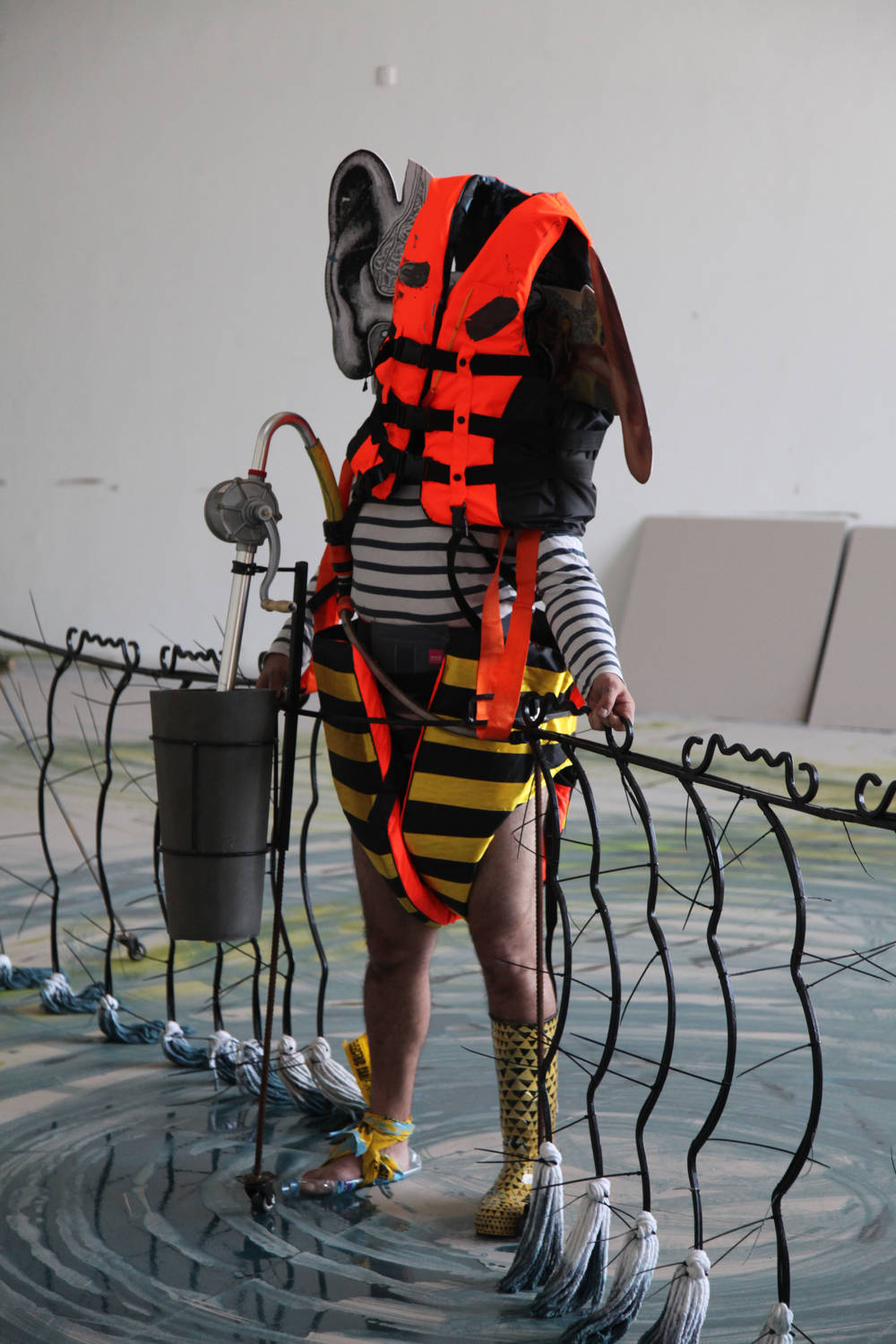
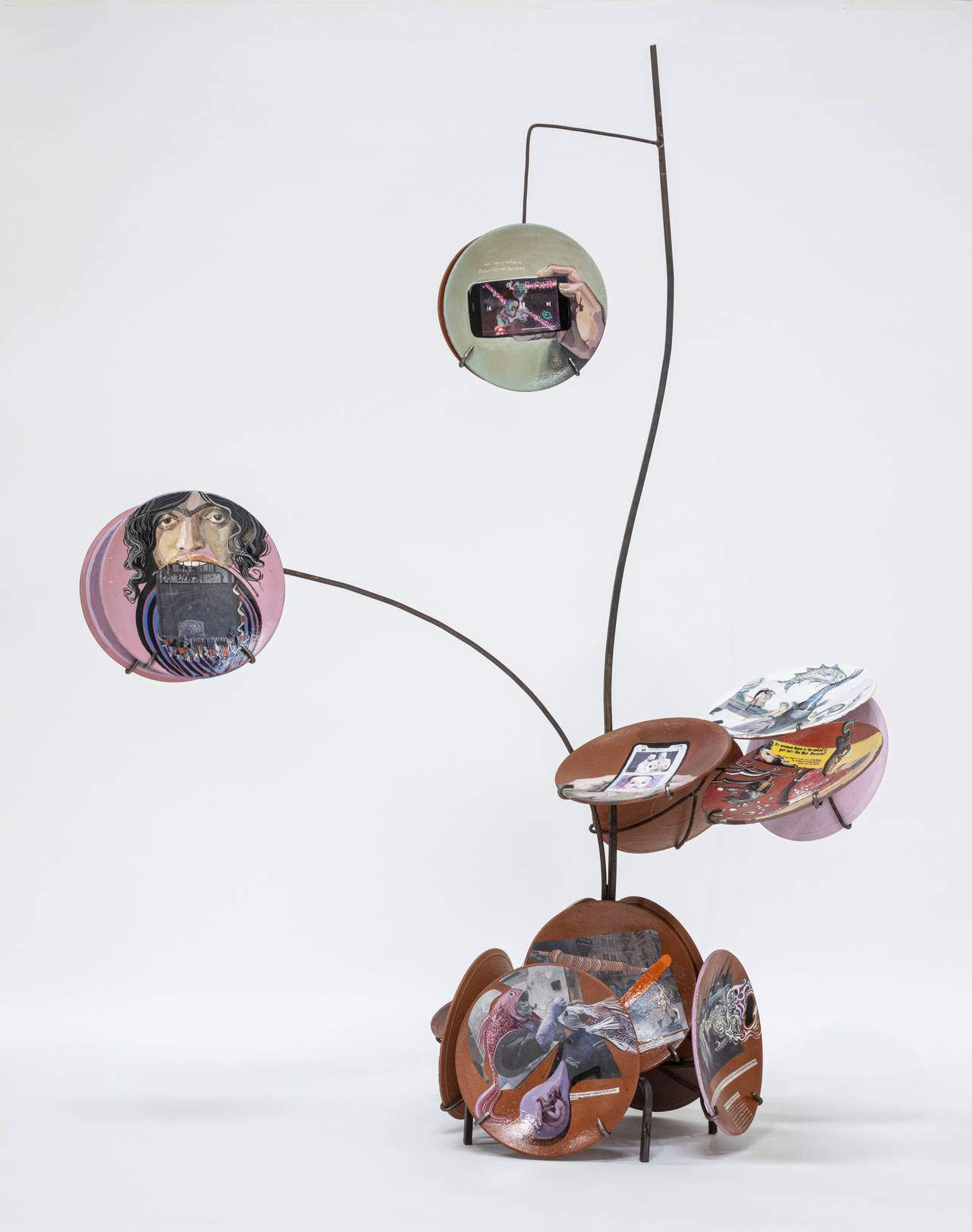
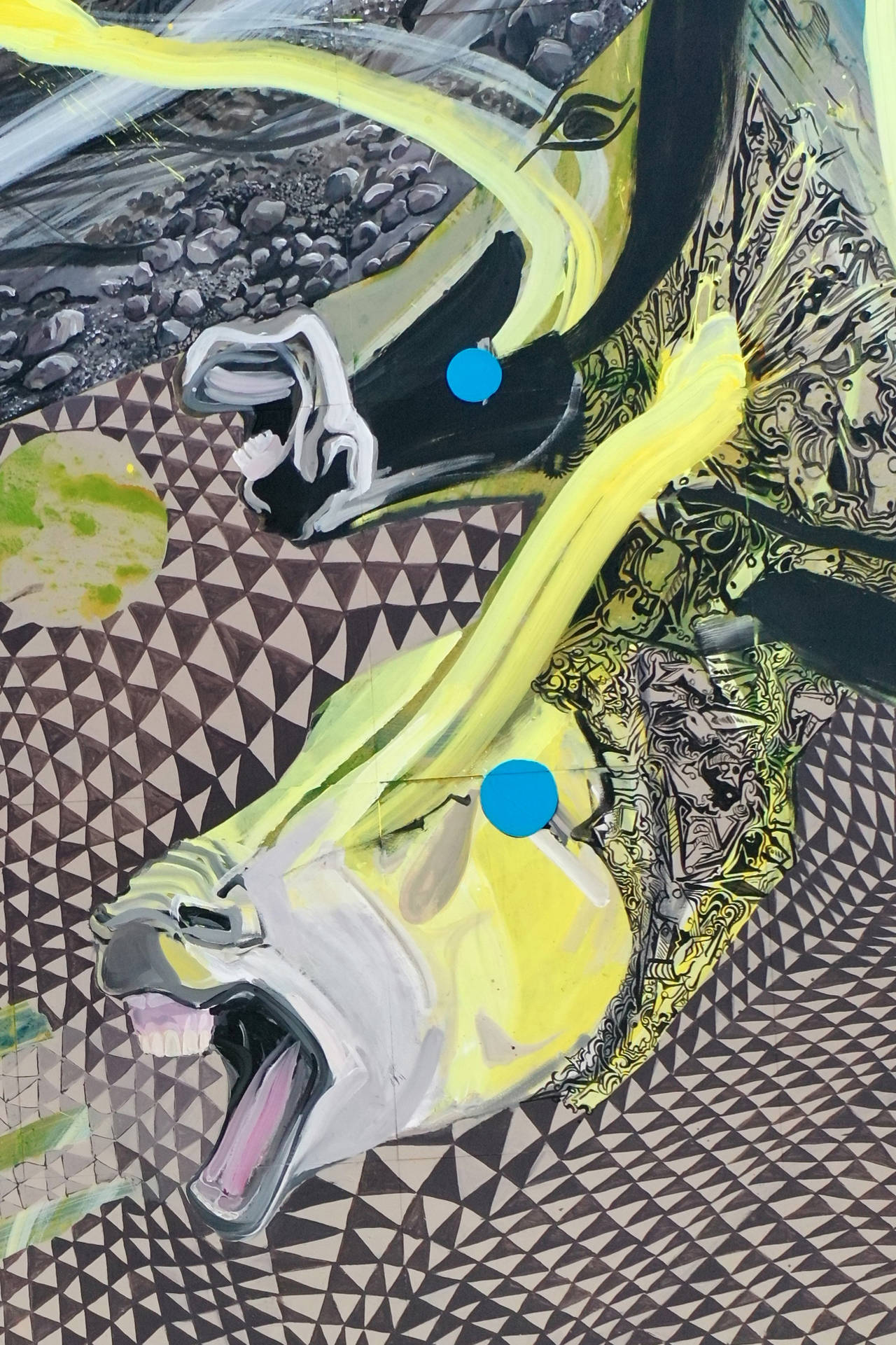
References to art history, pop culture, and current or historical events appear in many aspects in the trio’s oeuvre. The title of the exhibition at the Schirn, “Either he’s dead, or my watch has stopped: Groucho Marx (while getting the patient’s pulse)” thus cites the film classic “A Day at the Races” (1937) by the Marx Brothers. The basis for the artists’ “Moving Paintings” are, in turn, pictures archives of photographs and media reports that the artists have compiled themselves. They are then painted over and animated anew by the artists.
The political events of the day shape their artistic work
The artists grew up during the Iran-Iraq War (1980–88), a fact that continues to shape their lives and artistic work until today. On a large curtain one can see a presentation of a photograph of a mother carrying the mortal remains of her son, who went missing in that war and was found again ten years later. The social upheavals and aftereffects of the Iranian Revolution (1978–79) also permeate the exhibition. Another video work is dedicated to a popular style of dancing that developed in Iran in the 1980s despite the ban on dancing, and subverts traditional gender roles. This dance style was inspired by illegally distributed dance and fitness videos by the Iranian dancer Mohammad Khordadian, who was living in exile in Los Angeles.
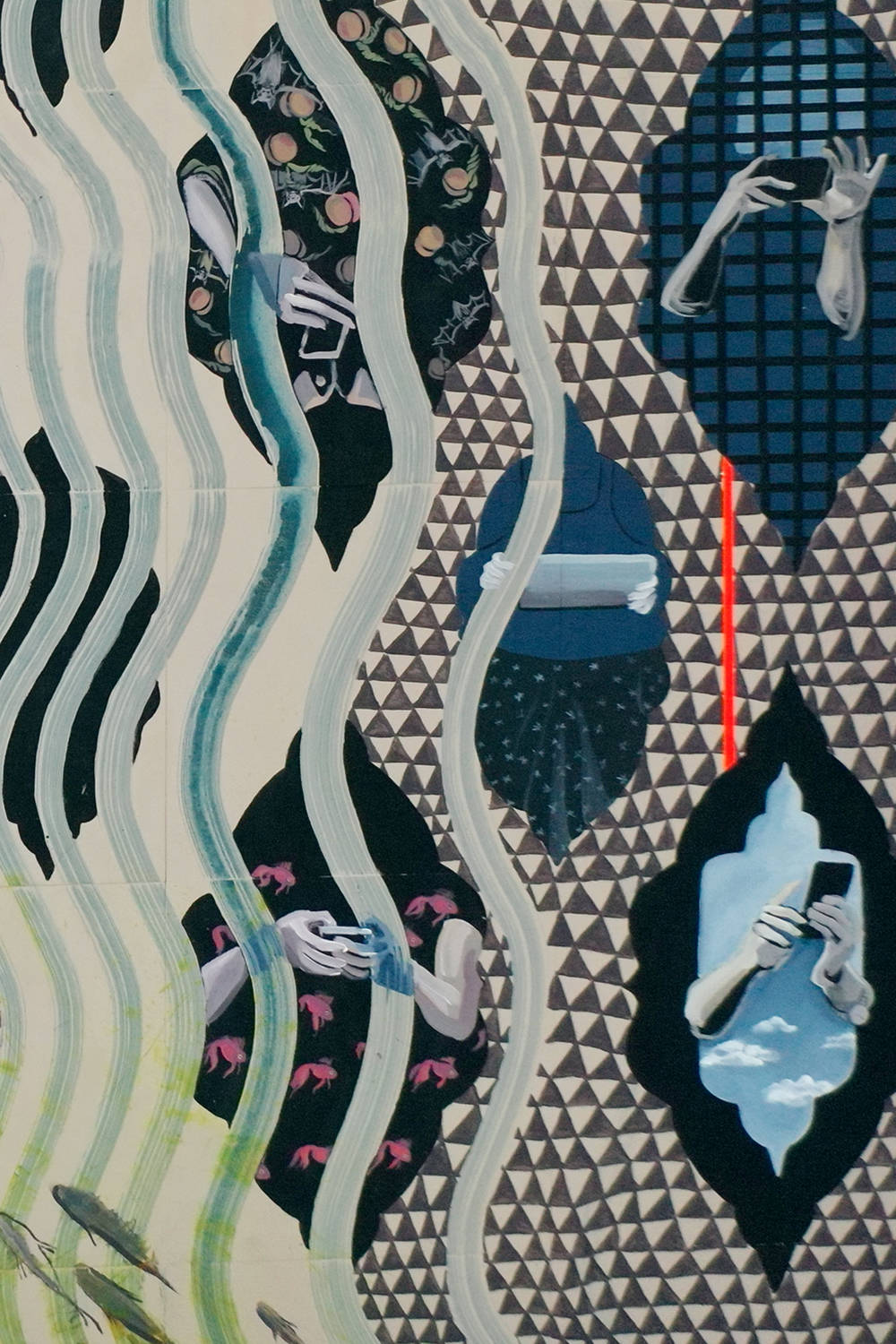
As a collective, the artists also address current events very directly. The exhibition thus presents not least works that were created during the corona pandemic. A video casts the period of the artists’ quarantine in a poetic form. While the days of the week from Monday to Sunday are repeated again and again in the voiceover, the camera slowly pans a dining table that is simultaneously a desk on which life and work take place in a very confined space. Two sculptures also come from the same context: they consist of steel frames with ceramic plates on which the artists painted and collaged motifs from the stream of media reports of these months.
“Either he’s dead or my watch has stopped” Groucho Marx (while getting the patient’s pulse)
RAMIN HAERIZADEH, ROKNI HAERIZADEH UND HESAM RAHMANIAN
3 September to 13 December 2020









